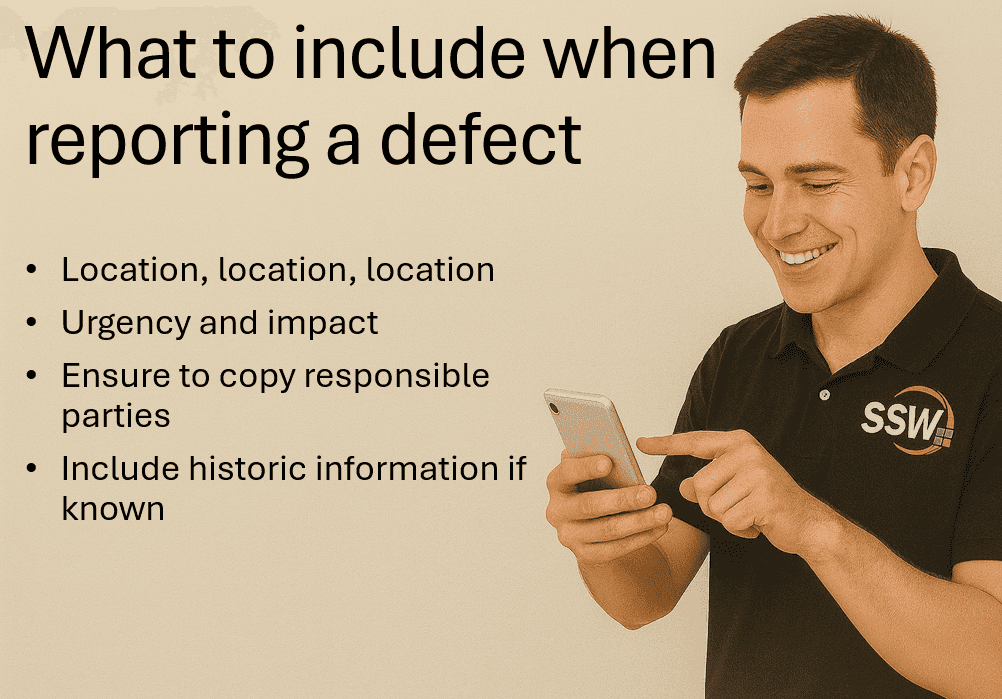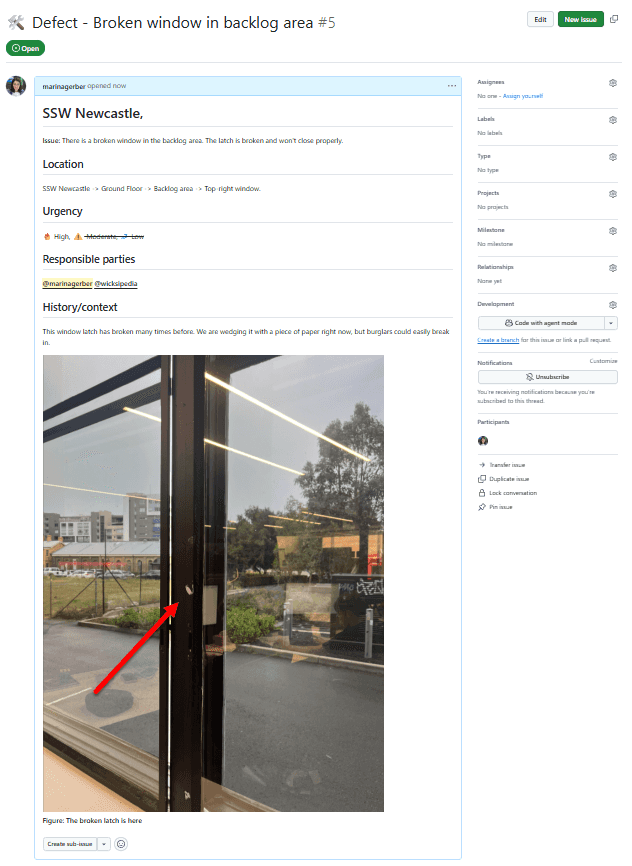Do you include all the essential details when reporting a defect to the Property Manager?
When a defect occurs in an office (e.g. a broken window, faulty air conditioning, or leaking tap), it’s crucial to report it with enough detail so that the Property Manager can take quick and accurate action. Many issues get delayed or mishandled because the initial report is missing key details like location, urgency, or who has been informed.

Good reporting not only helps the Property Manager resolve issues faster, it also improves turnaround time (TAT), feedback, and follow-up communication.
When reporting a defect, always make sure your message is clear, complete, and actionable.
Create a PBI (YakShave it)
- For traceability, create a PBI (Product Backlog Item) in your maintenance backlog titled “Defect – [Brief Description]”
- Link the PBI in your message so others can track progress and updates
Example: “Created PBI: Defect – Broken window in backlog area”
Key details to be included
1. Location
Start broad and zoom in:
- Office name → floor → area → exact item
Example: “SSW Newcastle → Ground floor → Backlog area → Top right window”
2. Urgency and impact
Does the defect affect your productivity or safety? If yes:
- Clearly state the impact
Example: “Can’t use meeting room due to flickering lights” - Mention any temporary fix you’ve applied
Example: “Taped over the exposed wire until repaired”
3. Ensure you inform responsible parties
Inform the people who is aware of the problem. Always include:
- The Head of Office
- The Property Manager
Tip: Use @mentions int the PBI, or if you’re reporting via Teams or email, e.g. “@John Smith @Sarah Jones”.
4. Historic information
- Note any past occurrences or related maintenance
Example: “Window was repaired in 2022 for the same issue”
Examples
“The window in Newcastle is broken. Someone should get it fixed.”
Figure: Bad example – Too vague; missing location, urgency, and who it’s reported to

Consistency in reporting helps ensure that all offices communicate defects in the same clear way — improving turnaround time, transparency, and accountability.
“YakShaving” each defect into a PBI will ensure property issues are logged, tracked, and resolved efficiently — saving time, reducing confusion, and improving everyone’s work environment.

